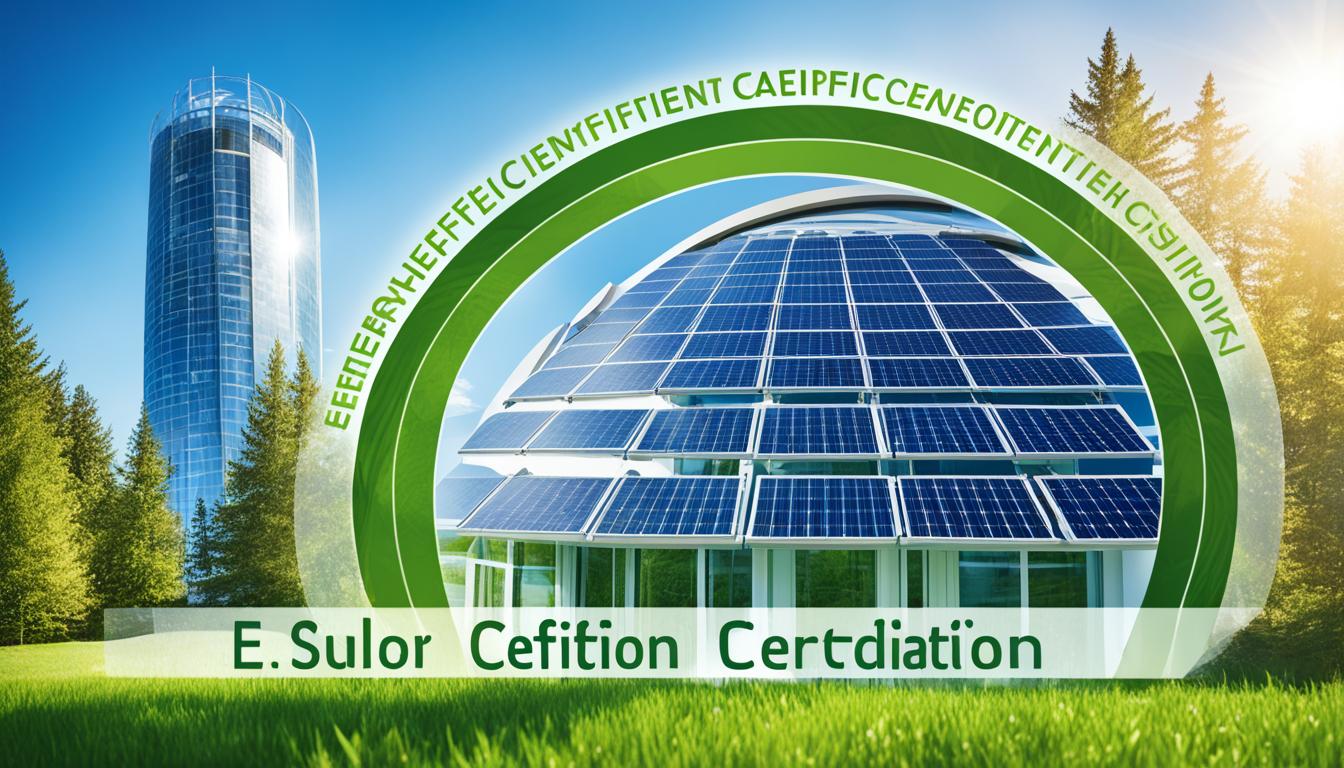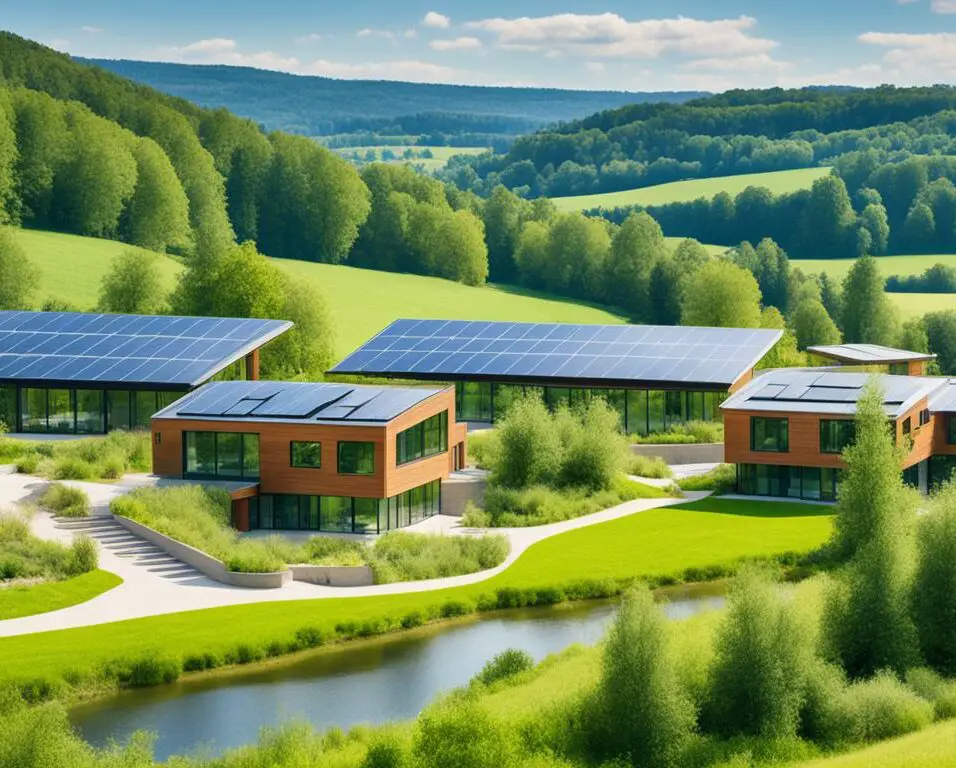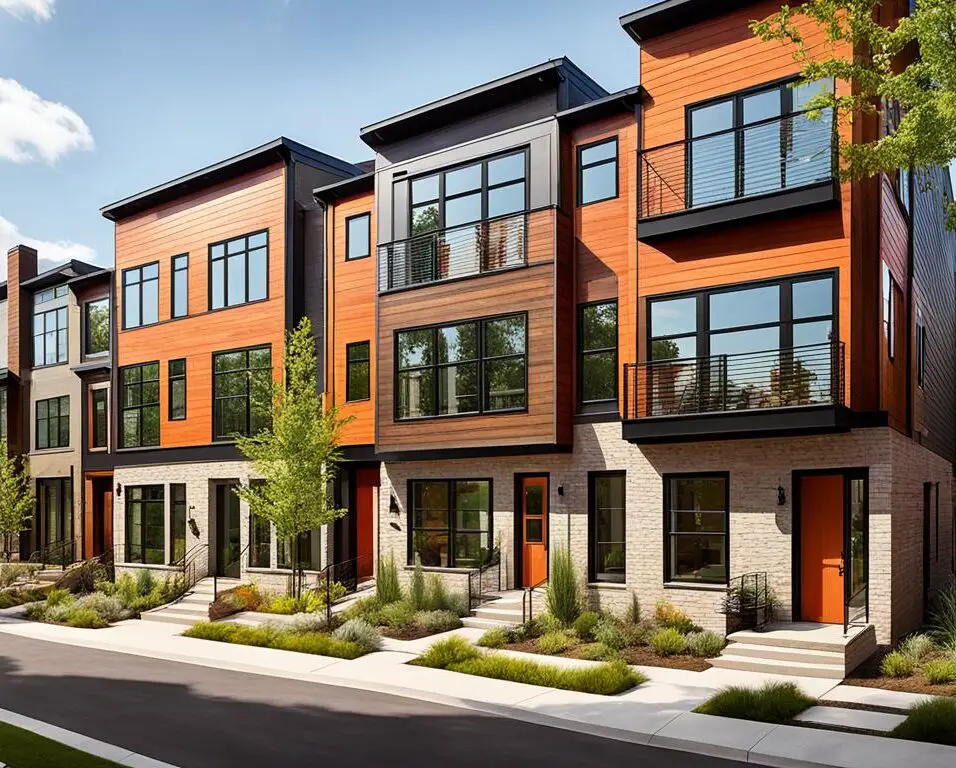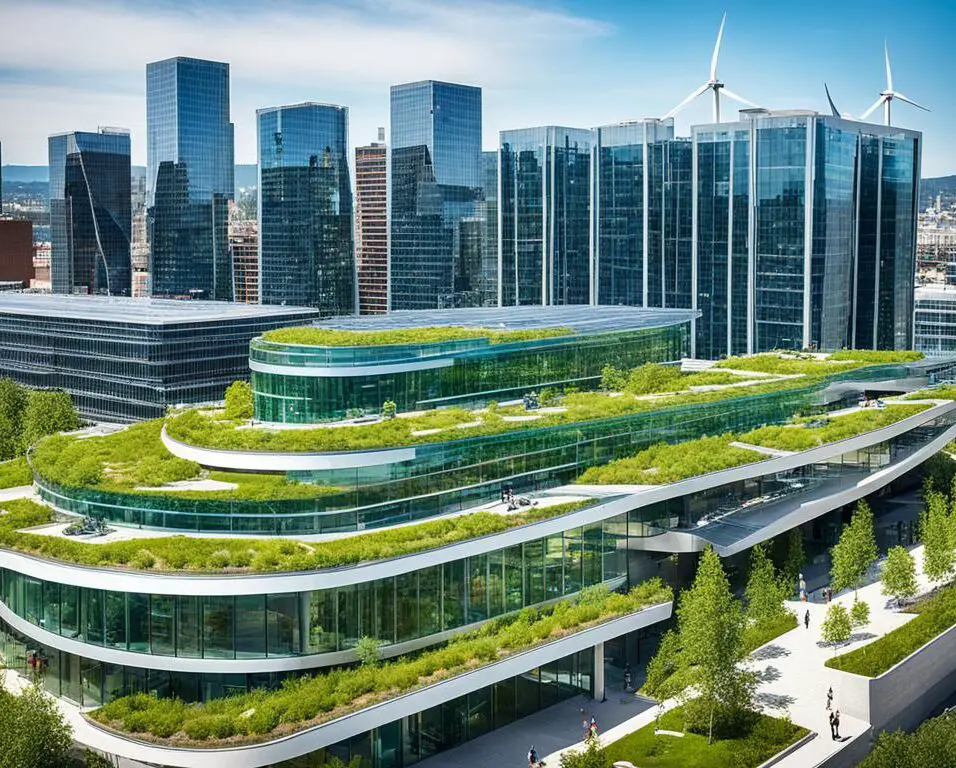Achieving Energy-Efficient Building Certification: A Guide
Energy-efficient building certification plays a vital role in driving sustainability in construction efforts across the United States. As the focus on environmental preservation and energy conservation intensifies, it becomes increasingly important for buildings to meet specific criteria and standards that minimize energy consumption and reduce their environmental impact. This guide will provide construction professionals and stakeholders with valuable insights into the steps and requirements to obtain energy-efficient building certification, enabling them to navigate the process effectively.
Key Takeaways:
- Energy-efficient building certification is crucial for promoting sustainability in the construction industry.
- Certified buildings are designed to optimize energy performance and reduce environmental impact.
- Energy-efficient design strategies, such as efficient insulation and renewable energy technologies, are incorporated into certified buildings.
- The certification process involves energy modeling, documentation, and performance testing.
- Achieving energy-efficient building certification benefits the environment, improves cost savings, and enhances occupant comfort.
Understanding the Importance of Energy-Efficient Building Certification
Energy-efficient building certification plays a crucial role in reducing energy consumption and ensuring environmental sustainability. When buildings are certified, they are designed and constructed to optimize energy performance, significantly minimizing their carbon footprint. Additionally, certified buildings enhance indoor environmental quality, providing occupants with a healthier and more comfortable living and working environment.
To achieve energy-efficient building certification, a key focus is on implementing energy-efficient design strategies. These strategies include efficient insulation, high-performance windows, advanced heating, ventilation, and air conditioning (HVAC) systems, and the integration of renewable energy technologies. By incorporating these strategies, certified buildings can substantially reduce energy consumption, resulting in long-term cost savings and improved building performance.
Energy-efficient design encompasses various elements, such as efficient building envelopes that minimize heat transfer and air leakage. High-performance windows help regulate heat gain and loss, enhancing thermal comfort while reducing reliance on artificial heating and cooling. Advanced HVAC systems utilize innovative technologies to optimize energy use and maintain optimal indoor air quality.
Energy-efficient design strategies, such as efficient insulation, high-performance windows, advanced HVAC systems, and renewable energy technologies, allow buildings to significantly reduce energy consumption and environmental impact while improving occupant comfort and well-being.
Building certification standards, such as LEED (Leadership in Energy and Environmental Design) or ENERGY STAR, evaluate a range of factors, including energy efficiency, water efficiency, materials selection, and indoor environmental quality. By adhering to these standards, construction professionals contribute to a more sustainable built environment that preserves natural resources and minimizes environmental degradation.
Obtaining energy-efficient building certification not only benefits the environment but also provides tangible advantages to building owners and occupants. Certified buildings often experience reduced operating costs due to lower energy consumption. Additionally, energy-efficient buildings have improved building performance, leading to increased occupant satisfaction, productivity, and well-being.
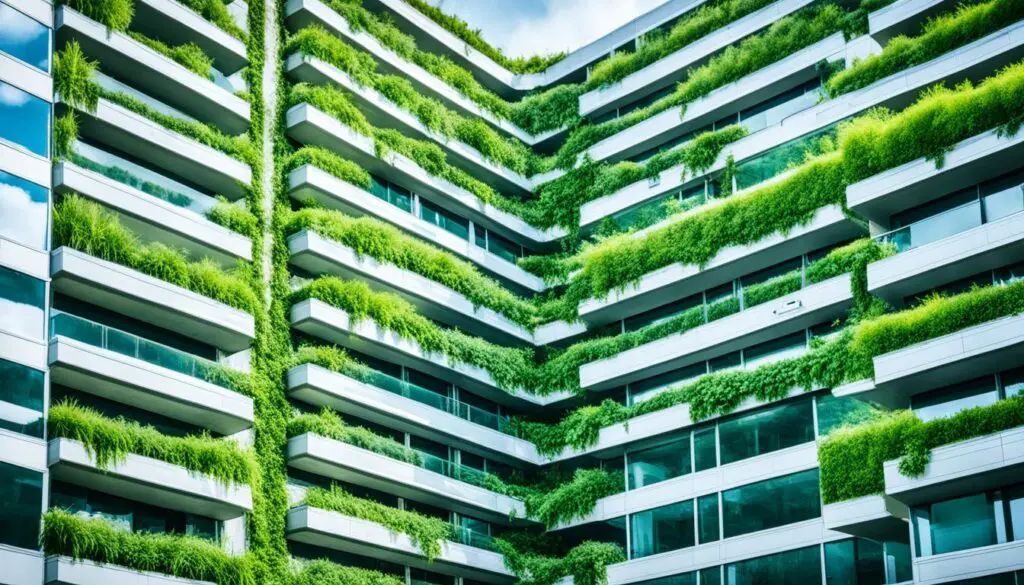
| Benefits of Energy-Efficient Building Certification | Summary |
|---|---|
| Reduces energy consumption | Reduces operating costs and environmental impact. |
| Enhances indoor environmental quality | Improves occupant comfort, health, and well-being. |
| Improves building performance | Increases occupant satisfaction and productivity. |
| Saves costs in the long run | Provides long-term cost savings through energy efficiency. |
| Contributes to environmental sustainability | Reduces carbon footprint and preserves natural resources. |
Steps to Obtain Energy-Efficient Building Certification
The process of obtaining energy-efficient building certification involves several essential steps. By following these steps, you can ensure that your building meets the required criteria for certification. Let’s take a closer look at each step:
1. Energy Modeling and Analysis
Firstly, it is crucial to conduct energy modeling and analysis to determine the building’s anticipated energy performance. Using advanced software tools, energy modeling simulates energy usage based on various design elements, allowing you to optimize energy efficiency.
2. Documentation for Compliance
Secondly, you need to provide documentation that demonstrates compliance with energy-efficient design criteria. This documentation may include details on the building envelope efficiency, HVAC system efficiency, lighting efficiency, and other relevant factors.
3. Performance Testing
Lastly, performance testing may be conducted to verify the actual energy performance of the completed building. This testing ensures that the building performs as expected and meets the required standards for energy efficiency and sustainability.
By following these steps, you can navigate the certification process smoothly and obtain energy-efficient building certification for your project.
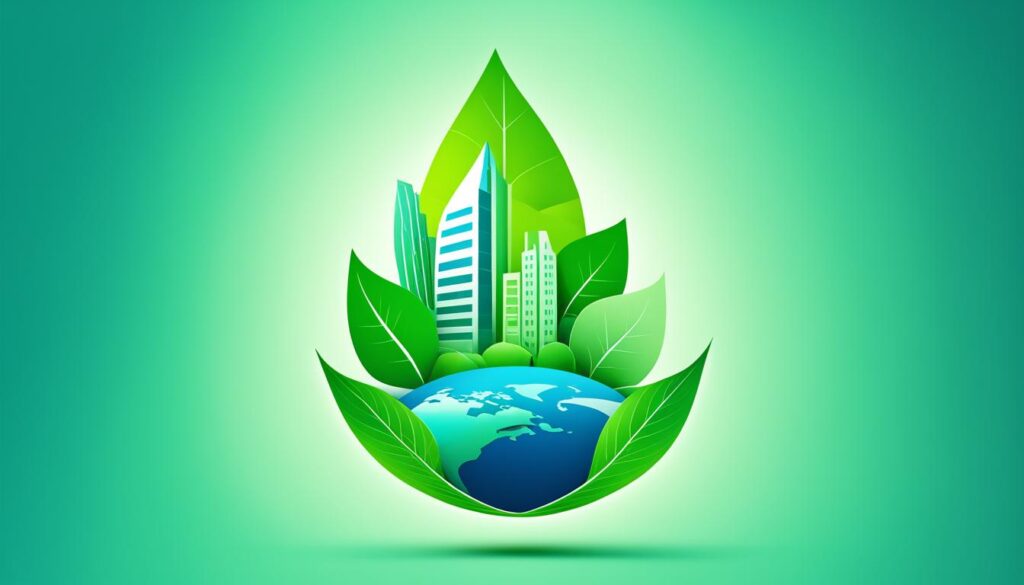
Conclusion
Achieving energy-efficient building certification is crucial for sustainable construction practices and environmental stewardship. By adhering to energy-efficient design standards and implementing innovative technologies, buildings can make a significant impact in reducing energy consumption and minimizing their environmental footprint. This not only benefits our planet but also enhances the overall quality and performance of the built environment.
With growing awareness about the importance of sustainability, energy-efficient building certification is gaining prominence and should be a priority for construction professionals and stakeholders. By investing in energy-saving measures, such as efficient insulation, high-performance windows, and advanced HVAC systems, we can create buildings that operate more efficiently, resulting in long-term cost savings and improved occupant comfort.
Energy-efficient building certification enables us to make substantial progress towards our sustainability goals. It demonstrates our commitment to responsible construction practices and showcases our efforts in environmental stewardship. As we continue to strive for a greener future, energy efficiency remains a linchpin in sustainable construction, transforming our buildings into efficient, comfortable, and environmentally conscious spaces.



